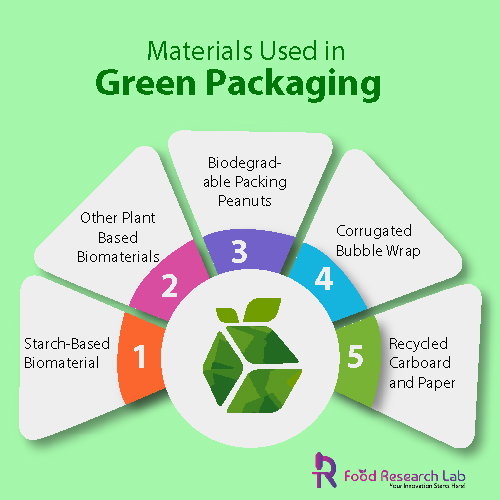
Novel Approaches to Food and Drink Packaging
Introduction
The current decade might be remembered as the decade of food and beverage packaging innovation. We are witnessing a fundamental rethinking of how food producers, processors, and packaging businesses package their products due to varying demand in numerous areas, including sustainability, customer convenience, and an increased need for transparency.
Sustainability
There is a climb in demand for ecological packaging solutions, especially in the food and beverage sector. This has primarily taken the shape of efforts to reduce the incidence of single-use plastics drastically. The nobility in this cause has achieved tremendous support from the public over the years.
This unexpected outpouring of public support is what has fueled the boom of sustainable packaging options. Globally, 67 per cent of customers believe it is critical that the items they buy come in recyclable packaging, with 54 per cent stating it is an active factor when shopping. These opinions are not diminishing because a splendid 83 per cent of younger customers are willing to pay for ecological packaging.

Packaging Made Of Paper
Paper and cardboard food packaging concepts are gaining traction as suitable alternatives to plastic packaging for a wide range of food goods. Paper packaging may be manufactured more readily from recycled resources and recycled or composted. Additionally, alternatives to plastic can also have the same physical rigidity and chemical stability as plastic packaging.
Reducing The Amount Of Packing
Removing superfluous components, perhaps the most effortless approach to enhance sustainability in food packaging, may nevertheless have a significant impact. It’s not unusual to find goods wrapped in excessive amounts of plastic, such as individually packaged bananas. This is the result of inefficient package design, which wastes resources and is costly too. Identifying and eliminating packaging components that aren’t required for freshness or safety is a brilliant place to start. The food and beverage industry needs to minimize packing.
Reusable Packaging
One technique to make plastic-based packaging more sustainable is encouraging customers to reuse it and providing them with the means. While it is still an outlying notion, several direct-to-consumer food organizations have achieved small-scale success by gathering packing materials for everyday goods, disinfecting them, and reusing them for future delivery. After around three uses, such packaging is believed to be “environmentally neutral.”
Packaging Made From Recycled Plastic
Packaging food products with recycled plastic saves the environment and depicts the importance of sustainable packaging to customers who buy the product. While forming food-safe packaging from recycled plastic is challenging, more creative solutions are developing to curtail the quantity of brand new plastics needed in food packaging.
Providing Assistance To Customers
Food and beverage items must compete for the attention of customers in oversaturated marketplaces. Food Packaging is critical for gaining new consumers since it is the consumer’s initial contact with a product. However, this creativity is no longer confined to bright and eye-catching patterns. Some of the most cutting-edge food packagings has elements that are highly valuable to customers.
Technology Integration
The advent of technology and cell phones’ indispensability has shown that technology cannot be left out of simple food buying. Food packaging companies use QR codes and NFC chips which are excellent and unique methods to provide clients with extra information about purchasing. These “smart labels” allow customers to obtain nutritional information and insights into how the product was manufactured in a matter of seconds, all while reducing the amount of paper required for labelling.
Labelling Must Be Legible
Shoppers have never been pickier about their foods, which means they now want clear labelling on everything they buy. Consumers are becoming more interested in identifying or knowing what kind of food product they purchase, whether it’s vegan, or whether it is gluten-free, etc. Food packaging manufacturers can no longer get away with concealing this critical information in the small print.
Minimalism
The days of crowded product packaging with words and graphics may be coming to an end. Consumers increasingly prefer items with a simple design that communicates the product’s fundamental value. Besides being visually appealing, minimalist food packaging items can reduce superfluous extras such as plastic sleeves and cost less.
Conclusion
While any food firm that counts packaging as critical operations will need to develop and improve in the following years, this will not be easy. Businesses will need to rethink their production methods and engage with other supply chain players. In many situations, packing costs will rise due to the requirement to employ more expensive novel materials.
Enterprise Resource Planning can overcome the challenges in the food packaging process. ERP is a software framework that integrates all areas of your food industry and all components of your technology stack into a single platform. It’s the ideal basis for incorporating innovative packaging materials and technologies most cost-effectively feasible.
Food Research Lab Provides Packaging Consulting Service
Food Research Lab is a global Contract R&D Food, Beverages & Nutraceutical Lab providing solutions to Food, Beverages and Nutraceuticals (F, B&N) industries worldwide.
Determining which packaging for food goods is acceptable necessitates research and skill. Food Research Lab offers you a wide range of packaging solutions along with support and technical advice from our experienced food technologists.

Reference
Framework for Sustainable Food Packaging Design
Kaisa Grönman,Risto Soukka,Terhen Järvi-Kääriäinen,Juha-Matti Katajajuuri,Mika Kuisma,Heta-Kaisa Koivupuro,Margareetta Ollila,Marja Pitkänen,Olli Miettinen,Frans Silvenius.





